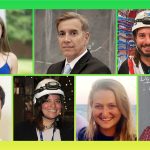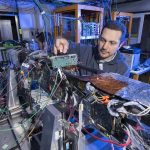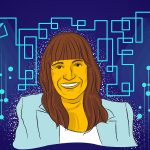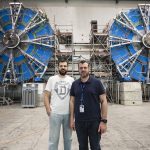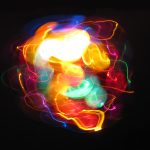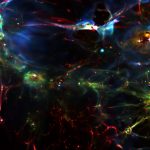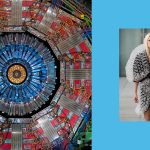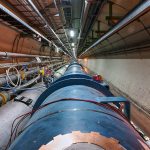ATLAS
Test beams generally sit to the side of full-on accelerators, sipping beam and passing it to the reconfigurable spaces housing temporary experiments. Scientists bring pieces of their detectors — sensors, chips, electronics or other material — and blast them with the well-understood beam to see if things work how they expect, and if their software performs as expected. Before a detector component can head to its forever home, it has to pass the test.
Konstantinos Iakovidis was training in Greece’s Hellenic Army in May 2008 when his younger brother, George, was accepted into the CERN summer student program. When George told Konstantinos he had been invited to move to Switzerland for two months, he cried — and encouraged him to take the opportunity. Little did Konstantinos know that six years later, he would make his own journey to CERN and would eventually join his physicist brother on the same project, as a mechanical engineer.
One of the latest discoveries from the LHC takes the properties of photons beyond what your electrodynamics teacher will tell you in class. For most of the year, the LHC collides protons, but for about a month each fall, the LHC switches things up and collides heavy atomic nuclei, such as lead ions. The main purpose of these lead collisions is to study a hot and dense subatomic fluid called the quark-gluon plasma, which is harder to create in collisions of protons. But these ion runs also enable scientists to turn the LHC into a new type of machine: a photon-photon collider.
With the warmth of holiday cheer in the air, some physicists decided to hit the pub after a conference in December 2014 and do what many physicists tend to do after work: keep talking about physics. That evening’s topic of conversation: dark energy particles. The chat would lead to a new line of investigation at the Large Hadron Collider at CERN. Every second, the universe grows a little bigger. Scientists are using the LHC to try to find out why.
If you want to visit the Pasner family farm, you’ll need a truck with four-wheel drive. You’ll need to traverse 4 miles of bumpy dirt road deep into the countryside of Penn Valley, California. But once you arrive, you’ll be greeted by fields of organic onions and garlic, nestled between rolling grassy hills speckled with oak trees. For physicist Jake Pasner, this will always be home.
During the last four years, LHC scientists have filled in gaps in our knowledge and tested the boundaries of the Standard Model. Since the start of Run II in March 2015, they’ve recorded an incredible amount of data —five times more than the LHC produced in Run I. The accelerator produced approximately 16 million billion proton-proton collisions — about one collision for every ant currently living on Earth.
A specialized measuring machine at SLAC is helping scientists build precise detectors for the ATLAS experiment.

